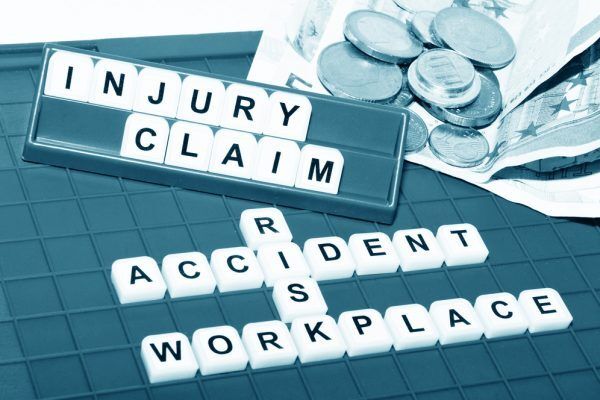Many Workers, in the open labor market, work closely with animals. These workers are at risk for unique Animal-Related Injuries. Additionally, there are Workers who work in areas where they are exposed to either dead animals or animal biproducts such as dander, urine or feces. These exposures place Workers at risk for injuries as well.
Animal-Related Work Injuries can range from very minor to very serious. Some can even result in the Worker’s death.
This article will discuss Animal-Related Work Injuries, what type of Occupations that are at risk for Animal-Related Work Injuries, what type of Animals are the sources of Animal-Related Work Injuries, the various mechanisms of injury from Animal-Related Work Injuries, Labor Code Sections that may relate to Animal-Related Work Injuries, and Caselaw concerning Animal-Related Work Injuries.
How Are Animals Harmful to Workers?
Animals are harmful to workers in many ways. “Live” Animals can pose risk of injury to workers. “Dead” Animals can pose a risk of injury to workers. Animal biproducts, such as dander, feathers, feces, and urine, can pose a risk to workers. As a result, Workers are capable of sustaining Animal-Related Work Injuries without ever seeing or coming in contact with an animal.
Note: for the purposes of this article, the term “Animals” refers to Live Animals, Dead Animals and Animal biproducts.
What Occupations are at Risk for Animal-Related Work Injuries?
Animal-related Work Injuries impact both the Public and Private Sector Employees.
There are many Public Sector Employees who are at risk for Animal-Related Work Injuries. They include Animal Control Officers, Firefighters, Forestry Workers, Meter Readers, Mosquito District Employees, Police Officers, Postal Officers, and Utility Workers. Are Animals Animals Animals Occupational Hazards? Occupational Hazards? Compensation and Working Conditions Fall 2000, P. 15.
There are many Private Sector Employees who are at risk for Animal-Related Work Injuries. They include Animal Caretakers, Animal Trainers, Butchers, Cattle Workers, Construction Workers, Dog Walkers, Farm Workers, Fisherman, Food Processors, Gardeners, Groundskeepers, House Sitters, Janitors, Jockeys, Laboratory Workers, Laborers, Landscapers, Machine Operators, Meat Cutters, Rodeo Riders, Slaughterhouse Workers, Transportation Workers, and Veterinary Technicians, and Veterinarians. Supra.
What Animals Can Cause Work-Related Injuries?
Practically every species of animal can be a source of an Animal-Related Work Injury. Animals that can be a cause of include Arachnids, Bees, Birds, Bovine, Cattle, Chickens, Dogs, Ducks, Fire Ants, Fish, Geese, Hornets, Horses, Insects, Mosquitos, Rats, Reptiles, Rodents, Scorpions, Sheep, Snakes, Spiders, Swine, Ticks, Turkeys, and Wasps.
What Types of Injures Can be Animal-Related?
There is a wide variety of mechanisms of injury that can involve Animals.
Allergic Reactions: This can include Cats, Dogs and Horses for dander, Fish, Shellfish and Insects
Attacks: This can include Cows, Cattle and Dogs.
Bites: This can be from Cats, Dogs, and Insects
These bites can include venom. Bites can cause illness such as Lyme disease or Rocky Mountain Spotted Fever.
Exposure/Inhalation: Workers can experience respiratory diseases as a result of exposure to animal products, dust, pathogens or chemicals(pesticides/disinfectants.)See Occupational Health (M Friesen and K Applebaum Section Editors) Published: 10 December 2019 Recent Research on Occupational Animal Exposures and Health Risks: A Narrative Review Caroline Dignard & Jessica H. Leibler Current Environmental Health Reports volume 6, pages236–246(2019)
Falls: Workers can fall off of ladders when being distracted by insects or fowl.
Goring: This can occur in the rodeo settling.
Interference: This can occur during transportation. For example, Animals on roads causing drivers to swerve or stop.
Lifting: Certain Job tasks involve the lifting of both live and dead animals
Mechanical Interference: Animals getting into machinery causing dysfunction. For example, Birds getting sucked into jet turbines.
Scratches: Scratches from cats can cause disease.
Dogs versus Cats: An Interesting Fun Fact
Dogs are three times power of a work hazard for nonfatal injuries than cats. Are Animals Animals Animals Occupational Hazards? Compensation and Working Conditions Fall 2000, P. 15.
Are there Any Statutes that Assist Injured Workers with Animal-Related Injuries?
Yes. There are a variety of Labor Code Sections that can assist Injured Workers with Animal-Related injuries.
These include
LYME DISEASE: There is a Lyme Disease Presumption for certain individuals. See Labor Code Section Labor Code Section 3212.12, which applies to certain Law Enforcement Officers and California Conservation Corp Personnel. For a detailed article on the Presumption, click here.
WEST NILE VIRUS: There is a Blood-Borne Disease Presumption for certain individuals. See Labor Code Section 3212.8, which applies to certain Law Enforcement and Safety Officers. For a detailed article discussing the Labor Code Section, click here
Is there Caselaw Involving Animal-Related Work Injuries?
Horse Related Injury: Hanrahan vs. California Horsemen’s Alliance, 2012 Cal. Wrk. Comp. P.D. LEXIS 578 (An injury of a worker being struck in the head by a horse that was moving. The eye injury was considered to be a high velocity eye injury which then allowed for up to 240 weeks of total temporary disability.)
Lyme Disease: Kuhl vs. Orange County Fire Authority, 2016 Cal. Wrk. Comp. P.D. LEXIS 642 (Injured Worker sustained burden of proving industrially caused Lyme Disease and received a 100 percent award.)
West Nile Virus: Leggette vs. CPS Security, 2020 Cal. Wrk. Comp. P. D. Lexis 3, 85 C.C.C. 321 (Applicant was found to have injury work-related when he contracted West Nile Virus as a result of being bitten by mosquitos)
What If I Need Legal Advice?
If you would like a free consultation concerning any workers’ compensation case, please contact the Law Offices of Edward J. Singer, a Professional Law Corporation. They have been helping people in Central and Southern California deal with their worker’s compensation cases for 28 years.




